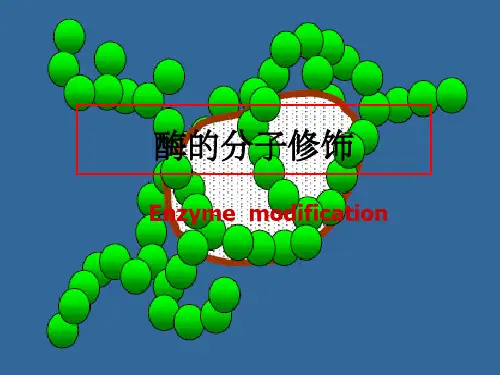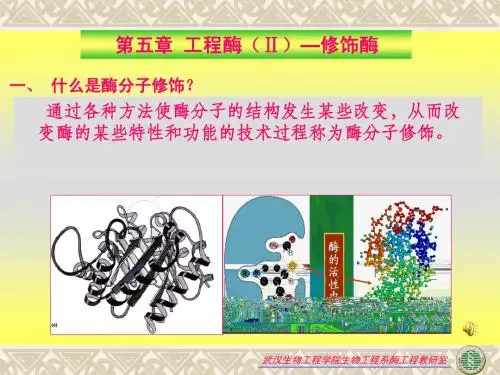范围。(70年代末之后)
1)提高酶的生物活性(酶活力)。 2)增强酶的稳定性(热稳定性、体内半衰期)。 3)消除抗原性(针对特异性反应降低生物识别能力)。 4)产生新的催化能力。
精品医学
25
第三节 酶化学修饰的原理
一、如何增强酶天然构象的稳定性与耐热性
修饰剂分子存在多个反应基团,可与酶形 成多点交联。使酶的天然构象产生“刚性” 结构。 二、如何保护酶活性部位与抗抑制剂
11
Active site
The active site is the region of the enzyme that binds the substrate, to form an enzyme-substrate complex, and transforms it into product. The active site is a three-dimensional entity, often a cleft or crevice on the surface of the protein, in which the substrate is bound by multiple weak interactions.
天冬氨酸(Aspartic acid,Asp,D),
谷氨酸(Glutamic acid,Glu,E)
精品医学
37
•几种重要的修饰反应: 烷基化反应 酰化反应 氧化还原反应 芳香环取代反应
精品医学
38
1. 化学修饰反应的类型
1) 烷基化反应 • 试剂特点:烷基上带活泼卤素,导致酶分子的亲核基
团(如-NH2,-SH等)发生烷基化。
精品医学
17
化学修饰的专一性
精品医学
18










